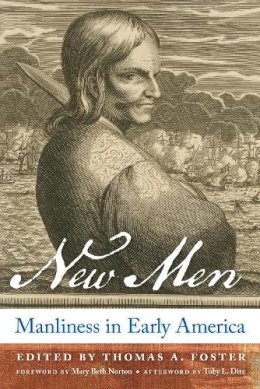
Stock image for illustration purposes only - book cover, edition or condition may vary.
Description for New Men
Paperback. Considers the conditions of early America which shaped and were shaped by ideals of masculinity Editor(s): Foster, Thomas A. Num Pages: 292 pages, black & white illustrations, black & white halftones. BIC Classification: 1KBB; HBJK; JFSJ2. Category: (P) Professional & Vocational. Dimension: 228 x 154 x 18. Weight in Grams: 414.
In 1782, J. Hector St. John de Crèvecoeur wrote, “What then, is the American, this new man? He is an American, who, leaving behind him all his ancient prejudices and manners, receives new ones from the new mode of life he has embraced.” In casting aside their European mores, these pioneers, de Crèvecoeur implied, were the very embodiment of a new culture, society, economy, and political system. But to what extent did manliness shape early America’s character and institutions? And what roles did race, ethnicity, and class play in forming masculinity?
Thomas A. Foster and his contributors grapple with ... Read more
Product Details
Format
Paperback
Publication date
2011
Publisher
New York University Press United States
Number of pages
292
Condition
New
Number of Pages
292
Place of Publication
New York, United States
ISBN
9780814727812
SKU
V9780814727812
Shipping Time
Usually ships in 15 to 20 working days
Ref
99-2
About Thomas Foster
Thomas A. Foster is Professor of History at Howard University, in Washington, DC, and author of Sex and the Eighteenth-Century Man: Massachusetts and the History of Sexuality in America, and Sex and the Founding Fathers: The American Quest for a Relatable Past. He is also editor of Long Before Stonewall: Histories of Same-Sex Sexuality (NYU Press, 2007), New Men: ... Read more
Reviews for New Men
New Men: Manliness in Early America, a collection of essays edited by Thomas A. Foster, examines various conceptions of masculinity from the founding of Jamestown in the early seventeenth century through the American Revolution. Indeed, Foster stresses the impossibility of identifying a single gendered American masculinity given its contingent relationship to status, race, sexuality, and regional identity. Accordingly, the dozens ... Read more
